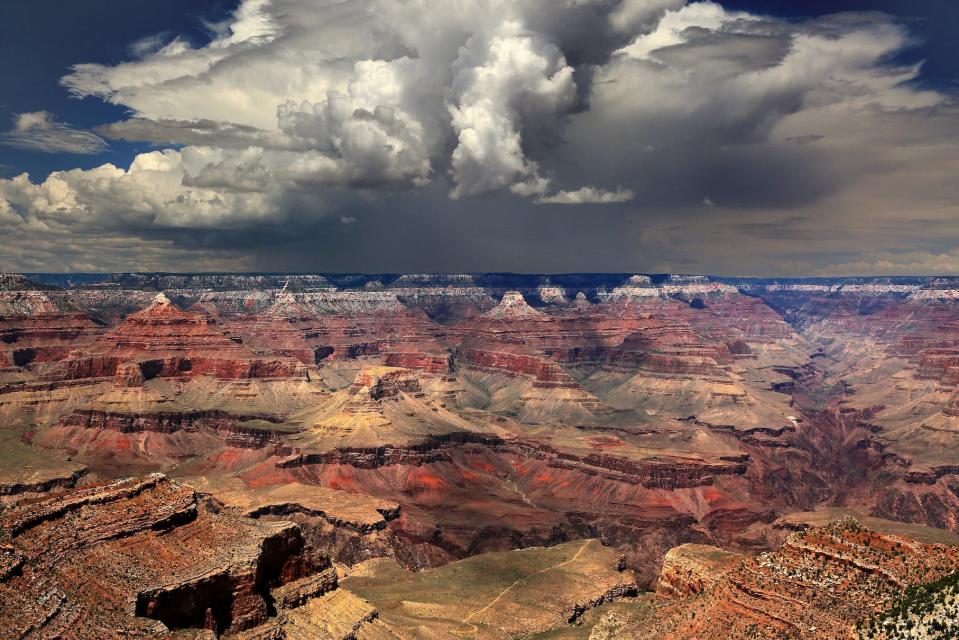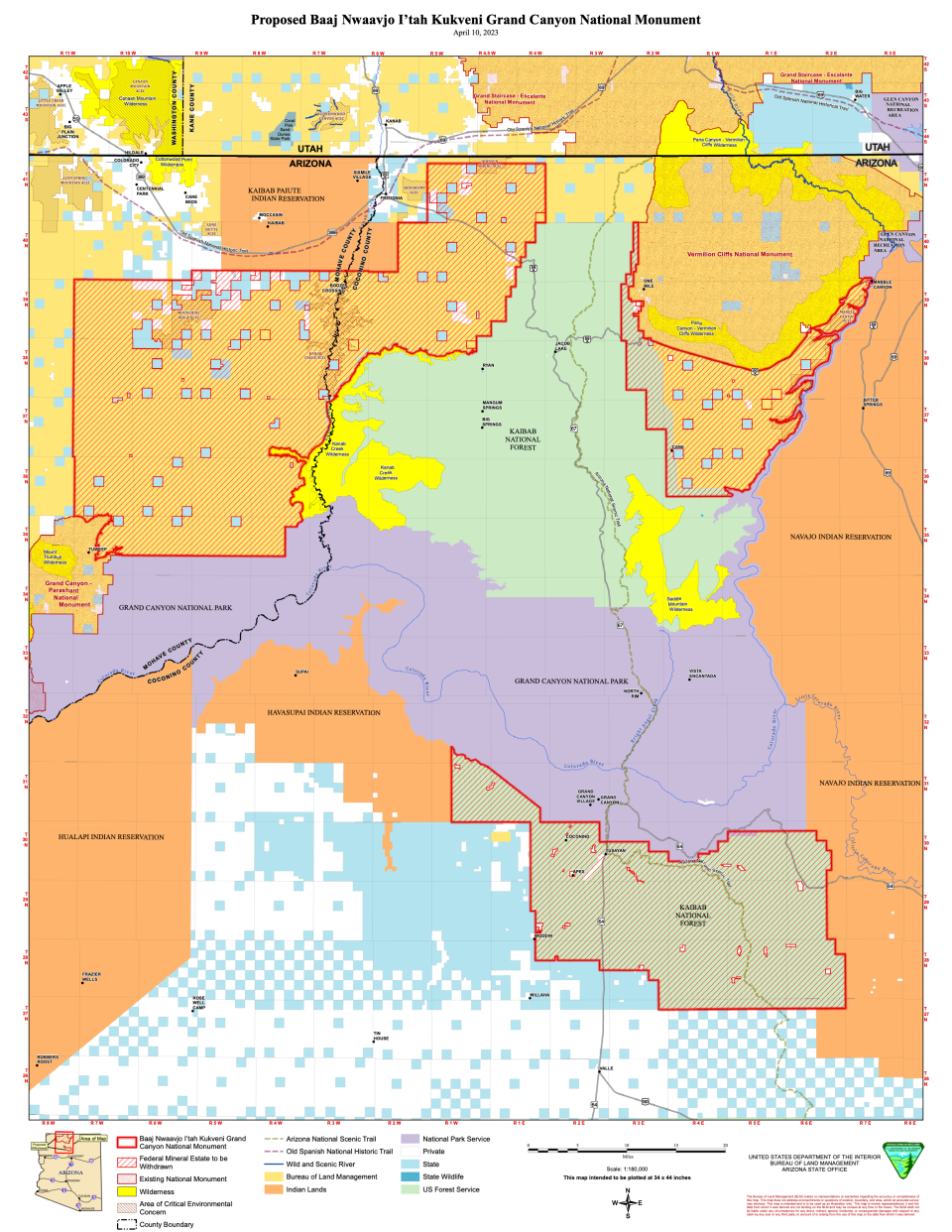Let's permanently protect the Grand Canyon and kill a myth about national parks
The Biden administration is currently considering the creation of a new national monument that would protect more than a million acres of the public lands surrounding Grand Canyon National Park.
The proposed Baaj Nwaavjo I’tah Kukveni Grand Canyon National Monument represents a transformative opportunity, not only to protect the irreplaceable ecosystems of the Grand Canyon region, but to imagine a more just and equitable future for the public lands of the United States.
Baaj Nwaavjo is a Havasupai phrase meaning “where the tribes roam;” i’tah kukveni is Hopi for “our footprints.”
The proposed monument is the culmination of a movement to protect the lands surrounding the Grand Canyon from the toxic effects of uranium mining that has been unfolding for more than a decade.
The driving force behind this movement has been a coalition of Arizona tribal nations, many of which continue to suffer the human and environmental consequences of uranium mining undertaken on their lands.
This tribal-led struggle has galvanized a remarkable coalition of local residents, environmentalists and outdoor recreationalists who understand the invaluable nature of these landscapes and the waters that move through them.
We booted tribes to create national parks

Efforts to conserve public lands in the Western United States have not always been so inclusive.
For those of us who grew up believing the celebrated idea, first articulated by writer Wallace Stegner and popularized by documentarian Ken Burns, that these public lands represent America’s “best idea,” an honest look at the history of how our national park system came to be can be sobering.
Even some of the most iconic national parks of the American West still had Indigenous peoples living within their boundaries when they were created.
This inconvenient fact led to a continuation of the process of dispossession that began with the violence of the frontier, all in order to create the illusion of parks untouched by human habitation.
In signing The Antiquities Act in 1906, President Theodore Roosevelt empowered himself and future presidents to protect millions of acres of significant landscapes and hundreds of Indigenous heritage sites.
He did so, however, not out of any sense of solidarity with Indigenous peoples, but rather thanks to his desire to celebrate the myth of the frontier and preserve the ruins of a people he understood to be a dying race.
Now, we're reimagining Indigenous nations' role

In the 117 years since Roosevelt signed that act, generations of Indigenous activists have begun to transform how the rest of us understand the relationship between public lands and Indigenous peoples.
The restoration of Timbisha Shoshone lands to tribal control in Death Valley National Park in the year 2000, and the creation of Bears Ears National Monument, administered through a collaboration of the federal government and the tribal governments of the Bears Ears Inter-Tribal Coalition, are two striking examples of how that relationship is being reimagined.
By creating Baaj Nwaavjo I’tah Kukveni Grand Canyon National Monument, the Biden administration would be taking the next step on the path towards restoring Indigenous nations’ rightful role in the stewardship of the lands they have lived in relation with since time immemorial.
But Indigenous peoples are far from the only constituencies who would benefit from this act.
The protection of these lands and the Colorado River watershed is of vital importance for the region’s legions of visitors and the local businesses that depend on them; the hunters and anglers who rely on thriving fish and wildlife populations; and the millions of residents of the Southwest who utilize the Colorado River for drinking water.
As Hopi Chairman Timothy Nuvangyaoma said in voicing his support for the proposed monument, “The creator gave us a gift. That gift is in the form of the Grand Canyon. That gift is not only to the tribal nations that have that intimate connection with it, it’s a gift to the state of Arizona, it’s a gift to the United States, it’s a gift to the entire world.”
For all of us who believe that our public lands ought to stand as a living testament to the best of our democracy, it is time to start listening to Indigenous leaders like Nuvangyaoma and urge President Biden to use his authority to work with the Indigenous nations of the region to protect that gift for future generations.
Alex Trimble Young is a scholar of the literature and culture of the United States West, and an associate teaching professor at Barrett, the Honors College at Arizona State University. Reach him at alex.t.young@asu.edu.
This article originally appeared on Arizona Republic: Grand Canyon national monument would help right a wrong against tribes

